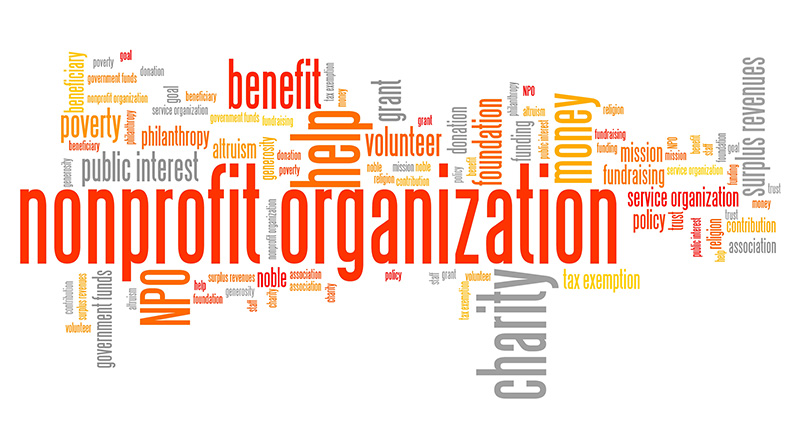Nonprofit Agency: Specialist Assistance for Your Goal and Area Effect
Wiki Article
Evaluating the Difficulties and Opportunities Dealt With by a Nonprofit Company in Getting Its Mission and Goals in Today's Culture
In the present landscape, nonprofit firms are navigating an intricate variety of challenges, such as rising and fall financing resources and increased competition for benefactor involvement. These problems, while daunting, can also unlock methods for technology and collaboration that might enhance their capability to accomplish objectives. By taking a look at exactly how nonprofits can tactically adapt to these characteristics, we can discover not just the methods they utilize to get over challenges yet likewise the untapped potential that lies within their functional frameworks. What remains to be seen is just how these companies will harness these possibilities to redefine their impact in culture.Present Landscape for Nonprofits
The present landscape for nonprofits is characterized by a complicated interplay of progressing financing models, increased competition for donor focus, and raising demands for responsibility and transparency. Not-for-profit companies are significantly diversifying their income streams to include gives, specific contributions, corporate sponsorships, and social business efforts. This shift reflects a strategic action to standard funding resources ending up being more uncertain and affordable.Additionally, the increase of data systems has changed just how nonprofits engage with potential contributors. Social network, crowdfunding, and online campaigns are now important devices for reaching broader target markets, yet they likewise heighten competitors amongst companies vying for restricted resources. In this setting, nonprofits should refine their messaging to efficiently record the rate of interest and commitment of supporters.
Additionally, stakeholders are requiring higher transparency pertaining to how funds are alloted and the quantifiable effect of not-for-profit tasks. This trend requires that companies take on robust responsibility actions, including detailed coverage and assessment structures, to show their efficiency. Subsequently, the nonprofit field is navigating a landscape that calls for innovative thinking, strategic adaptability, and a dedication to ethical practices in order to flourish amidst these vibrant difficulties and possibilities.
Secret Difficulties Come Across
Navigating the not-for-profit sector offers a myriad of difficulties that can prevent organizational performance and sustainability. Among one of the most pressing issues is the reliance on inconsistent funding sources. Nonprofits usually depend upon grants, contributions, and federal government assistance, which can rise and fall considerably, causing economic instability and troubles in long-term preparation.
Team retention and volunteer engagement posture further obstacles, as numerous nonprofits battle to supply affordable incomes and benefits. The high turnover prices can interfere with organizational continuity and influence solution shipment.
Furthermore, adjusting to technological improvements and electronic improvement stays a hurdle for lots of nonprofits. An absence of resources and proficiency can stop organizations from leveraging innovation properly, therefore restricting their outreach and efficiency.
Eventually, these challenges call for nonprofits to use calculated planning and cutting-edge methods to preserve their objective and make sure sustainability in an intricate landscape. nonprofit agency.
Arising Opportunities
Just how can nonprofits harness emerging possibilities to boost their effect? In today's rapidly progressing landscape, nonprofits have look at here now the opportunity to utilize technical developments, shifting social dynamics, and boosted public recognition to enhance their missions.In addition, cooperation with services and other markets is becoming more common, providing nonprofits with access to sources, know-how, and ingenious options. Partnerships can enhance campaigns, drive community involvement, and create lasting effects. Additionally, the expanding emphasis on company social obligation supplies nonprofits opportunities to align with organizations that prioritize social influence, gaining monetary assistance and shared objectives.
The raising concentrate on data-driven decision-making makes it possible for nonprofits to better evaluate their programs and results, boosting responsibility and efficiency. By accepting these arising chances, nonprofits can not just fortify their functional capacities but additionally broaden their impact in resolving pushing social problems, inevitably driving significant change in their communities.
Approaches for Adaptation
Adjusting to a frequently changing atmosphere is vital for nonprofits aiming to maintain their impact and efficiency. To navigate the complexities of contemporary culture, nonprofits must implement strategic strategies that improve their durability and responsiveness.One key method involves leveraging technology to streamline operations and increase outreach. By making use of digital platforms, nonprofits can improve interaction with stakeholders, improve fundraising initiatives, and boost awareness of their goal. In addition, embracing data-driven decision-making techniques allows companies to analyze their programs' efficiency and change approaches based upon empirical evidence.
Cooperation with various other organizations-- both for-profit and nonprofit-- can cultivate source sharing and innovation. nonprofit agency. Collaborations can result in shared proficiency, moneying chances, and increased networks, inevitably amplifying the collective influence
Moreover, growing a culture of versatility within the organization is vital. Educating staff to embrace modification and urging innovative analytic can empower teams to respond effectively to arising challenges.
Situation Studies and Success Stories
Successful adaptation techniques in the nonprofit field can commonly be highlighted through engaging case studies and success stories. One remarkable example is the "Feeding America" network, which changed its procedures throughout the COVID-19 pandemic. By leveraging modern technology and community partnerships, the organization scaled its food circulation initiatives to meet the extraordinary demand, serving numerous families who faced food instability.An additional impactful instance is the "Boys & Girls click over here now Clubs of America," which adapted its programs to an online layout throughout lockdowns. By introducing on-line mentorship and appealing activities, they preserved connections with young people throughout the country, making sure ongoing support and advancement regardless of the difficulties postured by social distancing.
Similarly, the "World Wildlife Fund" has successfully integrated community-based conservation techniques, empowering regional populations to get involved in wild animals security initiatives. This approach not only cultivates neighborhood possession yet also enhances ecological sustainability.
These study highlight how nonprofits are not just addressing instant obstacles however are additionally developing lasting services that straighten with their missions. By sharing such success tales, companies can inspire others to innovate and adjust, ultimately driving favorable modification within their neighborhoods.

Conclusion
Finally, not-for-profit agencies today navigate a complex landscape characterized by financial instability, competition, and labor force obstacles. However, the capacity for growth and technology continues to be considerable. By embracing electronic outreach, promoting collaborations, and applying data-driven techniques, these companies can boost their functional efficiency and far better line up with community needs. Inevitably, resolving both possibilities and challenges will be vital for nonprofits to accomplish their missions and attain lasting impact in culture.In the current landscape, not-for-profit firms are navigating a complex range of challenges, such as changing funding resources and enhanced competition for donor interaction. The nonprofit sector is navigating a landscape that requires cutting-edge thinking, critical flexibility, and a dedication to moral practices in order to flourish in the middle of these vibrant obstacles and chances.
Navigating the nonprofit industry provides a myriad of challenges that can hinder organizational performance and sustainability.In conclusion, nonprofit agencies today browse a complicated landscape identified by economic instability, competition, and labor force challenges. Eventually, dealing with both opportunities and challenges will certainly be crucial for nonprofits to satisfy their missions have a peek at these guys and attain lasting effect in culture.
Report this wiki page